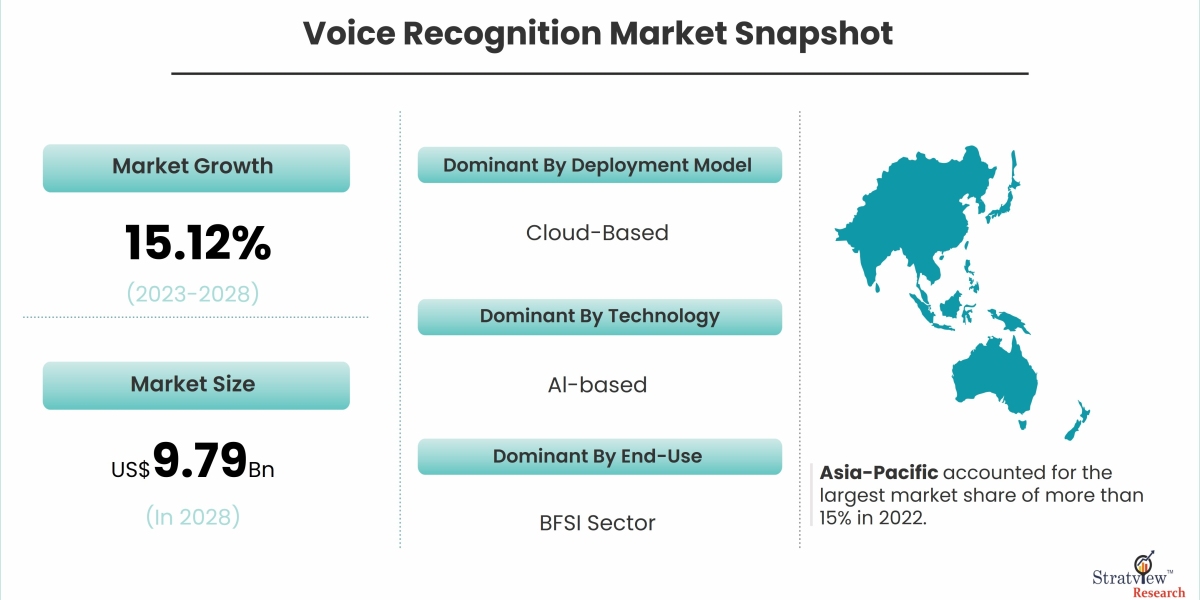According to Stratview Research, the voice recognition market was valued at USD 4.18 billion in 2022 and is likely to grow at a CAGR of 15.12% during 2023-2028 to reach USD 9.79 billion in 2028.
In the ever-evolving landscape of modern technology, the way we interact with our devices has undergone a profound transformation. Speech, once limited to human communication, has now emerged as a powerful interface bridging the gap between humans and machines. This article explores the pivotal role of voice recognition in modern technology, unraveling the layers of innovation that have propelled speech to the forefront of human-computer interaction.
The Evolution of Voice Recognition:
The journey of voice recognition from its nascent stages to its current state is a testament to the relentless pursuit of innovation. Early voice recognition systems struggled with accuracy and limitations, but with advancements in artificial intelligence and machine learning, the technology has achieved remarkable precision. Today, voice recognition is seamlessly integrated into our smartphones, smart speakers, automobiles, and an array of other devices.
Voice-Activated Virtual Assistants:
One of the most visible manifestations of voice recognition technology is the proliferation of virtual assistants. Siri, Google Assistant, Alexa, and others have become ubiquitous in our daily lives, allowing users to perform a myriad of tasks simply by uttering a command. From setting reminders and sending messages to controlling smart home devices, voice-activated virtual assistants have redefined the way we engage with technology.
Accessibility and Inclusivity:
Voice recognition technology has played a transformative role in enhancing accessibility and inclusivity. For individuals with disabilities or those who struggle with traditional input methods, speech as an interface provides a lifeline. The ability to control devices, access information, and communicate through voice commands breaks down barriers and ensures that technology is more widely accessible.
Applications Across Industries:
The impact of voice recognition extends far beyond consumer electronics. Various industries are harnessing the power of speech as an interface to improve efficiency and user experiences. In healthcare, voice-activated transcription services facilitate accurate and timely documentation for medical professionals. In logistics and manufacturing, workers can operate machinery and access information hands-free, enhancing safety and productivity.
Natural Language Processing (NLP) and Context Awareness:
Central to the effectiveness of voice recognition is the integration of Natural Language Processing (NLP). This enables machines to understand and interpret human language, making interactions more intuitive and conversational. As voice recognition systems become increasingly context-aware, they can comprehend nuances, understand user intent, and provide more personalized and efficient responses.
Challenges and Future Considerations:
While the rise of speech as an interface is remarkable, it comes with challenges. Privacy concerns, security issues, and the need for robust algorithms to handle diverse accents and languages are areas that demand ongoing attention. Striking the right balance between convenience and safeguarding user data will be crucial in shaping the future of voice recognition technology.
Conclusion:
Speech as an interface represents a paradigm shift in how we engage with modern technology. Voice recognition has transcended the realm of novelty to become an integral part of our digital experiences. From virtual assistants to hands-free navigation, the applications are vast and continue to expand. As we navigate this evolving landscape, it is essential to appreciate the transformative role that speech plays in enhancing accessibility, efficiency, and the overall user experience. The journey of speech as an interface is not just a technological evolution; it is a testament to the human desire to communicate effortlessly with the machines that have become an inseparable part of our lives.









